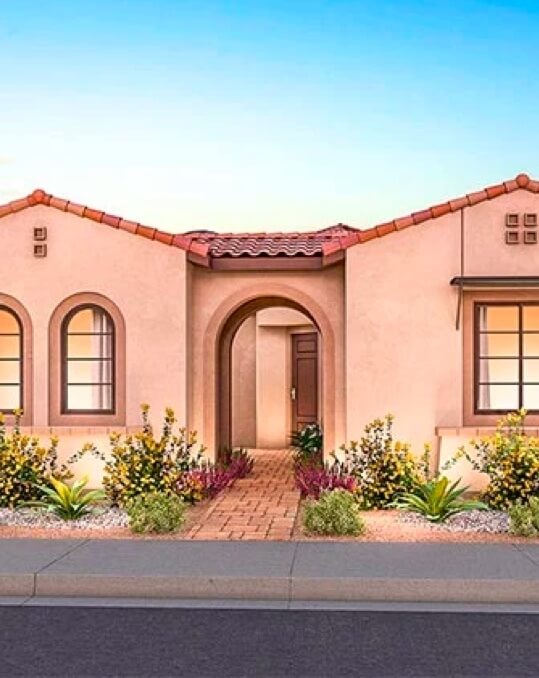It’s often said that buying a home is one of the most important decisions you’ll make in your life. It’s so much more than just four walls and a roof that provides shelter. You buy a home for its features but also for the neighborhood it’s in and the people that make that community live and breathe.
The importance of that decision guides much of the decision-making here at 55places.com, and as the internet’s number one resource for homebuyers considering a 55+ community, we want to provide an unbiased and straightforward list of the pros and cons of living in an active adult community.
The Basics: What Is a 55+ Community?
At its simplest, an active adult community (often referred to as a 55+ or “over 55” community) is one with residents primarily over the age of 55. The establishment of over 55 communities dates back to the Fair Housing Act of 1968 (FHA) which, among other things, sought to prohibit discrimination in housing based on race, gender, religion, or age.
Though communities geared towards those over 55 existed before then, there was no law preventing homebuyers under that age from moving in. In 1995, title VIII of the FHA was amended to create an exemption for 55+ communities that allowed them to create community covenants restricting the age of their residents and allowing them to market to homebuyers specifically over the age of 55. This amendment recognized and addressed an important need for housing geared toward the needs of active adult homebuyers.
Beyond the legal definition, 55+ communities are designed with homebuyers over 55 in mind. This includes things like shared amenities, ADA-compliant facilities, and low-maintenance and often single-level homes. They’re often, but not always, located in the Sunbelt to appeal to northerners looking for a reprieve from cold winters and shoveling snow.
Beyond the legal definitions and physical descriptions, 55 and over communities offer a sense of belonging and comradery to those over 55. After children have packed up and moved on, many older adults can sometimes feel isolated in their communities as the structures that provide a sense of place, like schools and youth sports facilities, fade. Many older adults can find a new sense of belonging when moving to a community with neighbors of a similar age.
Now that we’ve defined a 55+ community, we’ll look at some of the ups and downs of living in an active adult community.
Pros and Cons of 55+ Communities
Pros
Home and Community Maintenance
Most 55+ communities take care of some degree of home and community maintenance. This can be as simple as a community fund to take care of repairs to the clubhouse or, in some communities, include things like exterior home maintenance, landscaping, and in the case of some condo communities, house cleaning and other concierge-type services.
These maintenance services are particularly useful to older adults with mobility challenges. Also, a low-maintenance lifestyle gives residents the freedom to travel, knowing that the lawn will be maintained. With the burden of home-maintenance taken care of, you’ll have much more free time to enjoy your community.
A Resort-like Atmosphere
A resort-like atmosphere is something just about anyone can appreciate, and currently, there’s something of an arms race going on among communities to provide their residents with the best amenities they can. In some communities, this is as simple as a clubhouse for community gatherings, Homeowners’ Association (HOA) meetings, and seasonal parties.
Clubhouses often have kitchens indoors and pools and patios outdoors. In larger communities, the amenities really do rival those of a resort. Golf courses, miles of golf cart paths, community gardens, and state-of-the-art fitness centers attract potential homebuyers.
Peace and Quiet
Peace and quiet is another reason many people move to 55+ communities. However, they’re not child-free zones; after all, who would want to move somewhere where the grandchildren can’t visit? That said though, 55 and over communities tend to be on the quiet side when compared to a standard neighborhood.
Low Property Taxes
Related to the previous point, property taxes tend to be lower in active adult communities, especially the larger ones. With fewer children, less money is needed to support schools, after-school programs, and other government services aimed at young people. Residents of 55+ communities tend to be more civically active and often work hard to ensure government expenditures are kept in check.
An Ideal Location
“Location, location, location” is the age-old maxim in the world of real estate, and it’s absolutely relevant when it comes to 55+ communities. Though these communities can be found in all 50 states, the greatest concentration is in the Sun Belt, enticing homebuyers with year-round pleasant weather. Beyond this, over 55 communities are often thoughtfully located near medical facilities, helping homeowners keep a continuum of care even when moving across the country.
Cons
HOAs
Though most homebuyers are typically quite happy after buying a home in a 55+ community, the biggest problems with over 55 communities tend to revolve around HOAs and their associated fees. After all, someone has to pay to keep up all those amenities.
Problems can arise though if a major community expense comes along and the HOA doesn’t have enough funds to cover the cost. This can lead to pricey increases in dues that some homeowners may not be prepared for. Do your homework and learn about the health of the HOA in a community you might be considering.
Lack of Age Diversity
While some people enjoy living in a 55+ community without reservation, others can be put off by the lack of age diversity. If you’re someone who would like to spend your retirement working with youth, whether as a mentor or through activities like sports and scouting, you may find you have to leave your community to share your skills and knowledge.
Medical Needs
As we get older, our medical needs almost always become more involved. A common misconception of 55+ communities is that they’re retirement centers. Though some do offer continuing care services, this is fairly rare. Most active adult communities are designed with independent living in mind. If you require in-home care or other frequent assistance, you may be better served by a community built around those medical needs.
Smaller Homes
Most homes in 55+ communities are designed for two adults to live comfortably. As such, they tend to be smaller than homes on the broader market catered towards families. Many see this as an advantage as such homes are easier to maintain, but if you’re someone who likes having the whole family over for Thanksgiving, you may find space is a bit tight. Most homes offer ample space for entertaining but would be challenged by very large groups.
Considering an Active Adult Community
Hopefully, this piece has given you some good food for thought when considering an active adult community. Before pouring over beautiful photos of sun-drenched swimming pools and green golf courses, you should first ask, “Is a 55 and over community right for me?” Carefully thinking about the pros and cons of these communities is a good first step towards one of the most important decisions we make: where to call home.

